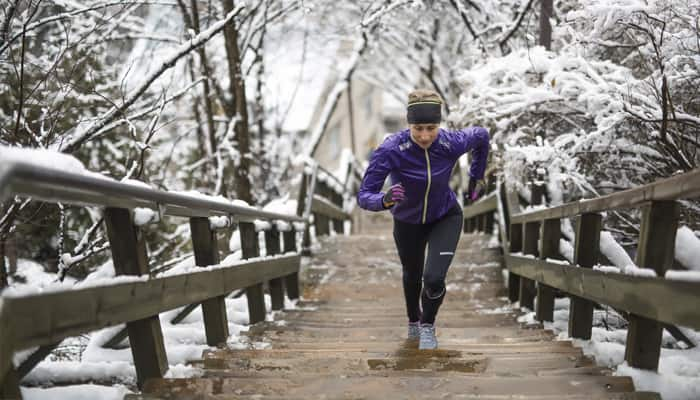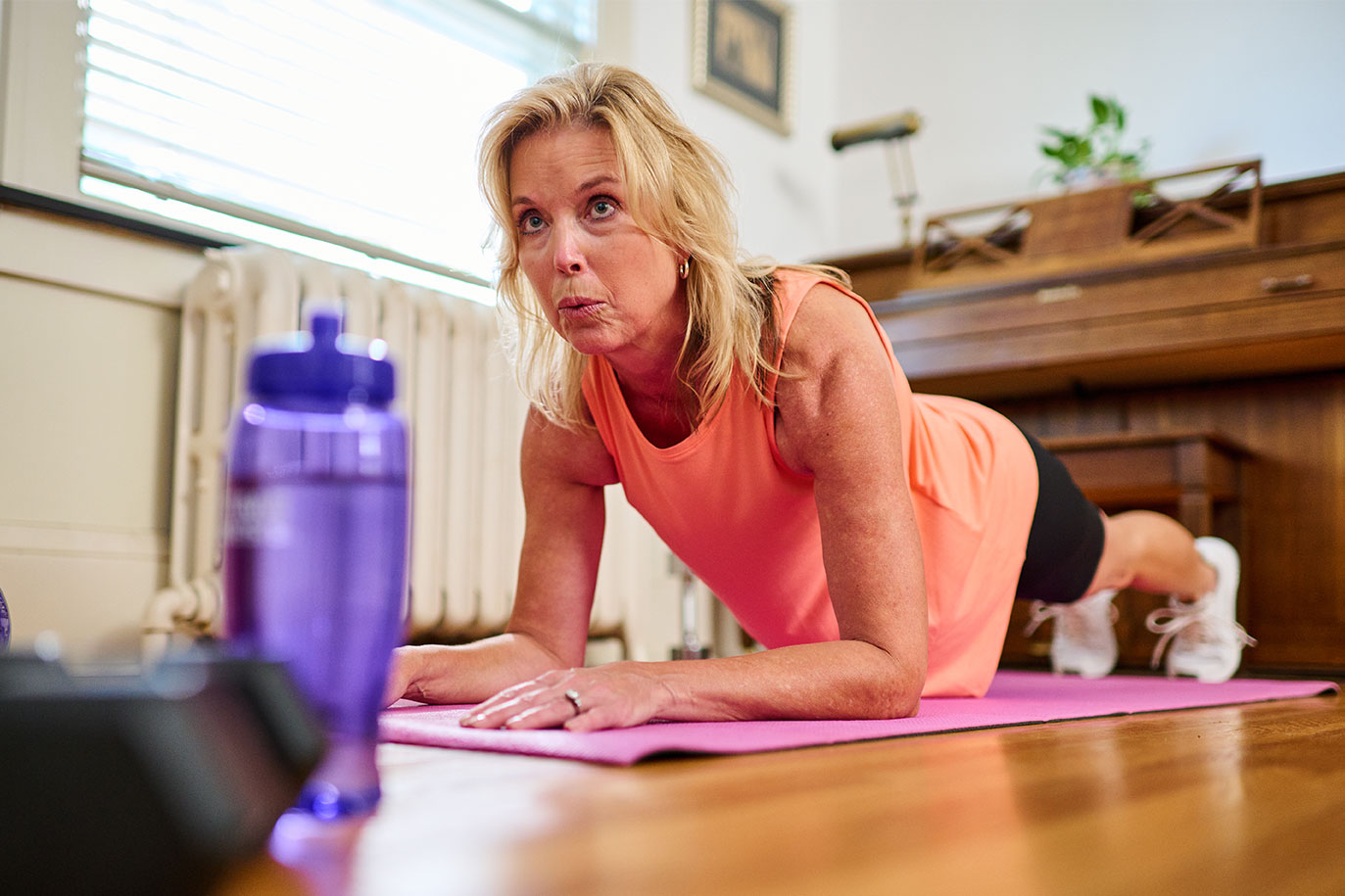While we say health and fitness is a lifelong journey (and it's true!), we'd be lying if we said it's easy to stay active all day.
With its longer days, warmer temperatures, more sunshine and, frankly, the better mood we all seem to be in, summer is the perfect time to experience this feeling motivated and alive. a more active lifestyle. And winter? With colder temperatures, gloomy weather and shorter days, it's that time of year when our motivation suddenly drops.
Ups and downs in your fitness journey are completely normal, but with a few helpful tips (15 to be exact), you won't have to let them happen. for an entire season. prevents you from achieving your goals.
Choose the exercise you like

source: google.com
The type of exercise you find fun may be completely different than your best friend. So make sure you're moving in a way that feels good, whether it's strength training, HIIT, yoga, pilates, walking, boxing, cycling, or dancing in your living room! Don't know what you like? Try different training styles and see which one you like best.
How you can make physical activity more enjoyable also depends on the time of day and the duration of physical activity. If you prefer to do it all at once (or want to do it better to fit your schedule), a 30- to 60-minute workout might be perfect for you. If a long workout seems daunting, try breaking the exercise into smaller segments or spacing out workouts, such as a short morning walk, a quick lunchtime workout, and a yoga set to end the workday.
Create a new goal
Setting a fitness goal can be a great way to stay motivated and give yourself a reason to achieve it. It can be as simple as working out for 30 minutes every day, following a sweat routine, running a 5K, lifting heavier weights, increasing flexibility, or mastering a new exercise.
Try something you've never done before
As the saying goes, variety is the spice of life and trying new things can improve your workout routine and make it fun and interesting, even in the cold season .
Train elsewhere or go to the gym
Try a new training style
Choose a new welding class
Be active at a different time of day
Train with a friend if you usually train alone
Stop walking while cycling
Buy new equipment
Reward yourself..
Wait, what's all this effort for? On days, weeks, or months when you struggle to find the motivation to exercise, set an exercise goal and reward yourself for achieving it. You can hit a daily step goal, three workouts a week, or up to 20 minutes of exercise a day.
What about the reward? Well, it can be whatever you want! Treat yourself to a new book, a movie night, that delicious scented candle you've always seen, a massage or brunch at your favorite cafe.
Make your own foods choices that make you feel good
In winter, you're naturally drawn to healthy, comforting foods like soups, stews and curries. Hmm! Don't worry, we definitely won't tell you to eat salads all winter, but mindful eating can go a long way in making you feel better.
If you tend to feel sluggish and more energetic in winter, pay attention to how you feel after each meal to find out what helps your body thrive. This may be related to specific foods, macronutrient balance (carbohydrates, proteins, and fats), portion sizes, meal times, or alcohol consumption.
Try the 5 minute rule
The hardest part of training is usually the beginning. To overcome exercise procrastination, set a timer for five minutes, get moving, and reevaluate how you feel after 5 minutes. If it's still not up to scratch, you can stop and know you did your best, but for many people, those five minutes are enough to stimulate feel-good endorphins.
Find a workout buddy
Having company can take your workout from mediocre to amazing in no time. A workout partner can not only make exercise more fun and sociable, but can also provide friendly competition, boost your confidence when exercising outdoors, and create accountability. A training partner doesn't necessarily have to be someone you train intensely with. This could be a simple walking buddy or someone you go to the gym with.
If you like to train alone but still want to feel supported by other women trips like yours, try connecting with the amazing SWEAT community on social media or via the Community tab in the SWEAT app.
Physical exercise during the lunch break

When days are shorter, moving your body in the morning or after work can mean exercising in the dark, which isn't always great for safety or motivation. If you have time, try to exercise around midday, when it's usually the brightest and hottest part of the day. Being outdoors also means enjoying the benefits of time spent in nature. Everyone wins!
Five ways to boost your energy in winter
1 . Spice up your morning
The key to staying active and energetic in cold weather starts with your morning routine. Start your day with intentions and activities that boost your energy and set a positive tone.
Dynamic stretches: Start your day with a series of dynamic stretching exercises. These stretches are active movements that increase blood circulation, flexibility and alertness. Dynamic stretches can include leg swings, arm circles, or trunk rotations.
Brief meditation: Incorporating a short meditation session into your morning routine can help you settle into sleep. mind. down Reduce stress, which is especially important during the colder months, when some people may be affected by SAD. A short mindfulness meditation that focuses on breathing and clearing thoughts can help improve mental clarity and overall mood
2. Hydration is essential
Adequate hydration is often associated with hot weather, but it is just as important, if not more so, during the colder months.
Even in cold climates, your body must regulate its temperature. When you're wrapped up in layers of clothing, you may not realize how much you're sweating. However, the body continues to lose fluid through breathing and sweating. Dehydration can affect your body's ability to maintain a stable core temperature and make you feel sluggish and tired.
Good hydration is essential for energy production at a cellular level. Dehydration can cause a reduction in blood volume, forcing the heart to work harder to pump blood and oxygen to the muscles. This extra effort can leave you tired and less motivated to stay active.
3. Light up your environment
As the days grow shorter and natural sunlight becomes scarce during the winter months, it's important to find ways to combat depression that can affect your mood and energy level. One way to achieve this is to illuminate living and working spaces with bright light.
According to the National Library of Medicine, exposure to natural or simulated sunlight has been shown to trigger the release of serotonin, a neurotransmitter that improves mood . Mood and helps regulate sleep. Model. By brightening your space with the right lighting, you can improve your overall well-being and motivation.
4. Warm up smart
Warming up before exercise is important all year round, but it becomes even more important when it's cold. Here we explain why a smart warm-up is important and how to do it:
Muscle tension and cold climate: cold temperatures can cause muscle and joint tension. suffer, stiffen. , making them more susceptible to injury. When you exercise without a proper warm-up, you're asking your body to perform strenuous activities with muscles that aren't adequately prepared
5. Boost yourself with an energizing diet
Your diet plays an important role in how your body functions, especially during the cold winter months when energy levels are low. could decrease. To stay active and energetic, it is important to make an effort to fuel your body with the right nutrients:
Complex carbohydrates: Complex carbohydrates are the main source of . power. Body. They ensure a constant release of glucose into the blood, helping to maintain energy levels throughout the day. Incorporate foods like whole grains (oats, brown rice, quinoa), starches (sweet potatoes, squash), and legumes (beans, lentils) into your meals.
By Gaurav